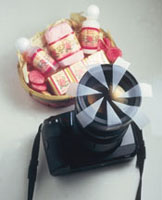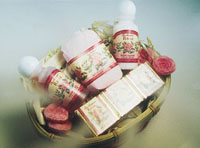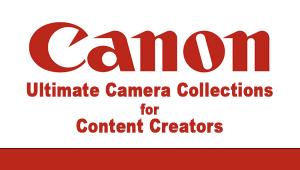Create Dynamic Effects
Soften Up Your Product Shots
One of the things that many
good photographers struggle with is sharpness. I have spent years of
my life working on getting the most tack-sharp images, and have even
written a few stories for your favorite magazine explaining some of
the things that I do to make things really, really sharp. Now I'm
going to go in the opposite direction. |
|||
I have made a living taking
gorgeously lit, perfectly exposed pictures of people and products, but
like all the other copycat photographers out there, I have been really
energized by the changing photography scene. I now mix lots of sharp but
predictable product work with some very different and usually soft product
work. Lots of photographers have experimented with different levels of
in camera diffusion, post-process Photoshop diffusion, and even commercial
solutions like the Hosemaster and Turbo Filter lighting systems. Without
investing in expensive equipment, there are a number of different techniques
that you can apply to get interesting diffusion effects. The nicest of
the softening filters are the Nikon diffusion filters or the Hasselblad
Softars. Pop one on your lens, take your picture, and you've got
a perfect soft image. If you shoot weddings, great. If you're trying
to get some interesting effects for product work, forget about it. |
|||
I'll assume that you
probably don't have a studio full of high powered flash heads mounted
in 10" Fresnel spotlights, so here are a few techniques that can
look really great and can be done with the equipment you already own.
My first and favorite technique is the famed Scotch Tape Selective Diffusion
Technique. (Hereafter referred to as STSDT.) Here's how I do it--using
small flash units, a couple of photofloods, or some nice window light,
I cut up small pieces of crystal clear Scotch tape and a few pieces of
that slightly opaque "invisible" stuff. I then apply a small
sunburst of pieces to a skylight filter, usually leaving one main area
clear. I screw the filter on the lens and turn the filter around until
the diffusion effect is to my liking. According to the brightness of the
scene, the tape will diffuse the image or obscure it with a white frosty
effect. You can experiment with clear packing tape, laminating film, and
tiny pieces of Roscoe Toughlux. In the old days photographers put Vaseline
on the lens, but this is a little cleaner and can deliver some dynamite
looks. Obviously you'll need to experiment with tape on different
areas of the lens, but this costs next to nothing so it is easy to mess
around with. |
|||
For the shot of the two colored
goblets I chose a different approach. One of my favorite looks is to "frame"
the product within a box of diffusion. While this works really well when
shooting on a surface that has some detail, even on white this looks pretty
cool. As you can see the right side of the image goes almost white, yet
it looks like snow on a windowpane. With semi-opaque tape you can vary
the effect by determining how much light actually falls on the surface
of the tape and on how bright the scene is. The other shot of the goblets
shows how effective overall diffusion can be when combined with fast grainy
film. Here I applied a single sheet of clear packing tape over a skylight
filter and fired off shots at different aperture/shutter speed combinations.
Smaller apertures yield sharper images; wider apertures are softer and
more romantic. For the overall diffusion look, I usually prefer a wide
angle lens since this increases the sense of intimacy. |





















































